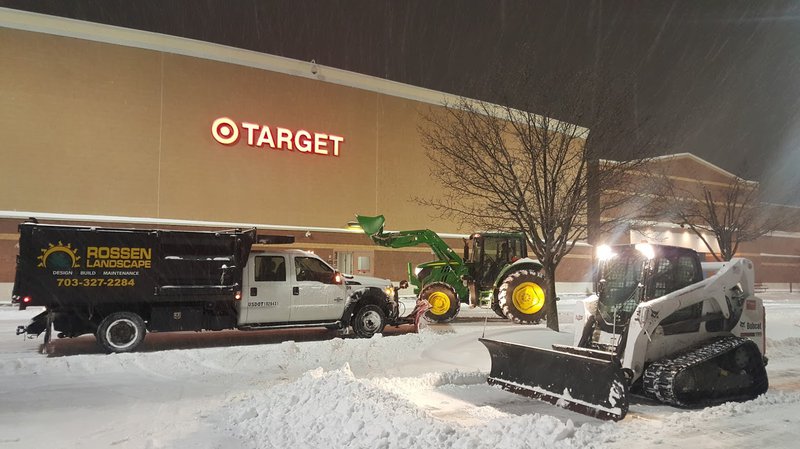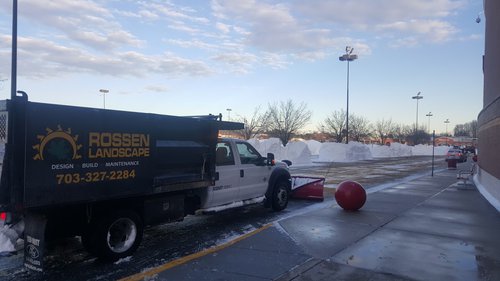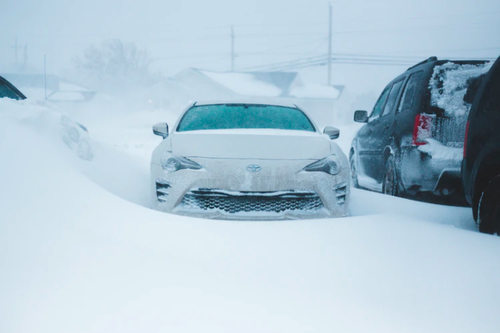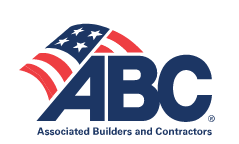
Ice, Ice Baby: Four Focus Areas for Commercial Snow and Ice Management
Snow falls... but make sure your customers and employees don't.
Managing a commercial facility comes with its own special set of challenges. The safety of tenants, employees, and visitors, as well as accessibility of entrances, walkways, and pathways is crucial. A bunch of snow and ice may threaten that safety.
Whether you operate a healthcare facility, retail center, office park or HOA, work doesn’t stop at commercial properties just because snow falls and ice accumulates. Winter weather can impact access to your site’s entryways and regularly traveled pathways, as well as add the risk of slips and falls.
To enhance approachability, safety, and security on your property, let’s take a look at how you can stay on top of snow and ice to keep your operation running smoothly and reduce your liability concerns.

1. Keep Entranceways Clear
Snow and ice doesn’t always stay away from entryways — even when they are covered. Wind can blow winter weather around and create slick spots and snow piles where you least expect them.
If you have certain spots that need 24-hours-a-day, seven-days-a-week clearance, explain those to your snow and ice management company so they know those areas should be top priority when they arrive on your site to perform winter work.

2. Manage Parking Lots
Just like entranceways, parking lots also need to be accessible and clear to ensure people can come and go during business and high-traffic hours.
Unfortunately, parking lots can ice up pretty quickly because they are very open. This means wind can work with the snow and ice to freeze the parking surface. But for your commercial facility to run smoothly, visitors should be able to clearly see and access parking spots.
Salt or ice melt products become important for keeping ice at a manageable level in parking areas. These products each have their pros and cons. Talk to your snow and ice services provider about the best strategy for your property to meet both your expectations and your budgetary needs.
3. Build Trust and Communication
Snow never falls on your schedule. One day, it’s falling in the middle of the night, and the next day, it’s impacting rush hour.
As such, you don’t want to be constantly worrying about what’s happening at your facility at all hours of the day. If you have to get out of bed to make sure work is being done, you may want to look for a new service provider you can trust.
Response times in snow and ice management are important. You want to hire a partner who prioritizes your needs and understands winter weather variabilities. Talk to your potential and current providers about a plan for communicating with you so you’re comfortable with how and when they notify you that work is being done. This can be a wonderful tool for eliminating another headache from your list of things to do.
4. Embrace Safe Work Habits
Since snow and ice clearing crews tend to be salting or plowing at all hours, their professional habits are important to note.
Do they use adequate lighting so they are visible while working on your site? This way, anyone coming or going on your site can see them and still move around the landscape with ease.
When working on pathways or sidewalks, snow removal crew members should also wear reflective vests so you can easily see them. Additionally, they should respect other peoples’ movements on the property while they are doing their work. Common courtesy and service standards go hand-in-hand so that work gets done safely.
Snow and Ice Services You Don’t Have to Stress About
The vast size and complexity of a commercial property can make tackling snow and ice management feel like quite a large undertaking.
Securing a snow and ice management contract with a company you trust can ensure your special areas or high-traffic spots are always clear and your property is accessible and safe.
Rossen Landscape would love to help you improve accessibility and safety at your property. Contact us and we can discuss your priorities and budget and come up with a solution that fits your specific needs.





